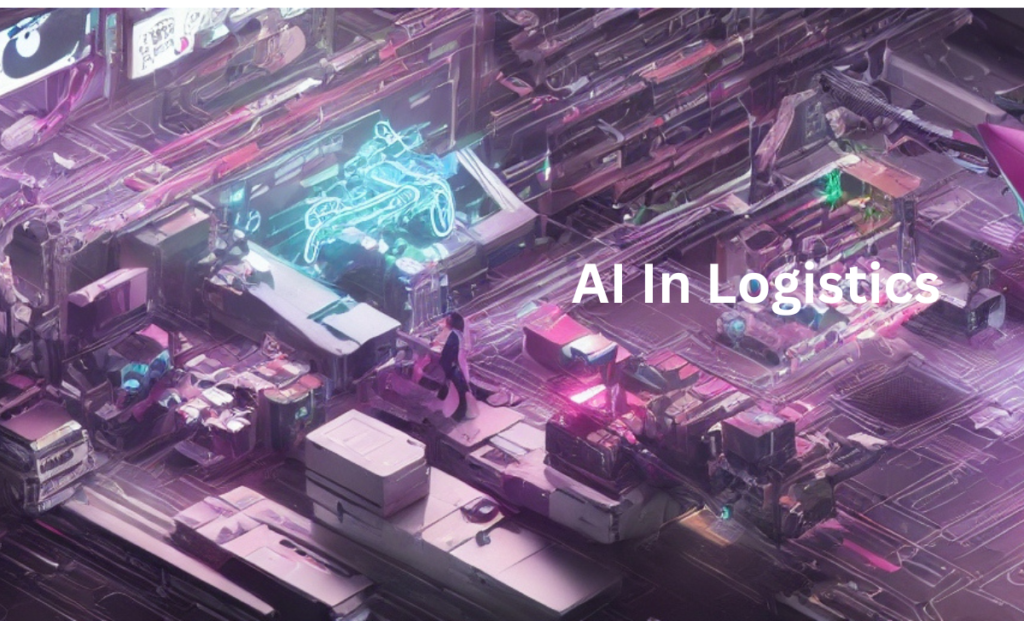|
Listen Now Our Blog Podcast
Getting your Trinity Audio player ready...
|
Transportation and logistics are critical aspects of modern business operations. The efficient and timely movement of goods and people is essential for the success of any enterprise.
Artificial Intelligence (AI) is rapidly transforming the transportation and logistics sector by increasing operational efficiency, improving safety, and reducing costs.
In this blog, we will discuss the top ten ways AI is being used in transportation and logistics.
Route Optimization: AI is being used to optimize routes by considering various factors like traffic, weather, and road conditions. This reduces transportation costs and improves delivery times. According to a study by McKinsey, route optimization can reduce transportation costs by up to 20%.
Predictive Maintenance: AI can predict the need for maintenance by analyzing data from sensors in vehicles and equipment. This allows for timely REPAIRS and reduces downtime. According to a report by Frost and Sullivan, predictive maintenance can reduce maintenance costs by up to 30%.
Demand Forecasting: AI is being used to forecast demand by analyzing historical data, market trends, and external factors like weather and events. This helps logistics companies optimize their inventory and staffing levels. According to a report by DHL, demand forecasting can improve inventory accuracy by up to 40%.
Autonomous Vehicles: AI-powered autonomous vehicles are being tested and deployed in various transportation sectors, including trucks, buses, and trains. These vehicles have the potential to improve safety, reduce labor costs, and increase efficiency.
Last-Mile Delivery: AI is being used to optimize last-mile delivery by considering factors like traffic, weather, and package size. This can reduce delivery times and costs. According to a study by Accenture, last-mile delivery optimization can reduce delivery costs by up to 25%.
Real-Time Tracking: AI-powered tracking systems are being used to provide real-time tracking of vehicles and packages. This increases transparency and improves customer satisfaction.
Predictive Analytics: AI is being used to analyze data from various sources, including social media and weather reports, to make informed decisions about transportation and logistics operations. This helps logistics companies stay ahead of the competition and optimize their operations.
Customer Service: AI-powered chatbots are being used to provide instant customer service and support. This improves customer satisfaction and reduces the workload of customer service representatives.
Warehouse Optimization: AI is being used to optimize warehouse operations by analyzing data from sensors and cameras. This can improve inventory management, reduce errors, and increase efficiency.
Fraud Detection: AI is being used to detect and prevent fraud by analyzing data from various sources. This helps logistics companies avoid financial losses and maintain their reputation.
Statistics on the use of AI in Transportation and Logistics
| Application | Benefit | Estimated cost savings |
| Route optimization | Reduces transportation costs and improves delivery times | Up to 20% |
| Predictive maintenance | Predicts maintenance needs and reduces downtime | Up to 30% |
| Demand forecasting | Improves inventory accuracy and staffing levels | Up to 40% |
| Last-mile delivery | Reduces delivery costs | Up to 25% |
| Autonomous vehicles | Improves safety and reduces labor costs | To be Determined |
| Real-time tracking | Increases transparency and improves customer satisfaction | To be Determined |
| Predictive analytics | Helps logistics companies optimize their operations and stay ahead | To be Determined |
| Customer service | Improves customer satisfaction and reduces workload | To be Determined |
| Warehouse optimization | Improves inventory management and reduces errors | To be Determined |
| Fraud detection | Helps logistics companies avoid financial losses and maintain the reputation | To be Determined |
Here is How AI has Improved Logistics Business KPI metrics

| No | KPIs | AI Impact |
| 1 | Delivery times | Up to 50% reduction |
| 2 | Operational costs | Up to 30% reduction |
| 3 | Inventory management | Up to 45% improvement |
| 4 | Capacity utilization | Up to 20% improvement |
| 5 | Supply chain visibility | Up to 60% improvement |
| 6 | Shipping accuracy | Up to 90% improvement |
| 7 | Asset utilization | Up to 25% improvement |
| 8 | Customer satisfaction | Up to 35% improvement |
| 9 | Route optimization | Up to 40% improvement |
| 10 | Predictive maintenance | Up to 20% reduction in downtime |
Conclusion
AI is becoming an increasingly critical component in the transportation and logistics industry in 2023. From optimizing supply chain management and enhancing route planning to improving safety and reducing costs, AI is transforming the way we move goods and people. As technology continues to advance, we can expect even more innovative applications of AI in the transportation and logistics sector in the coming years.
About the Author:
I am a professional writer specializing in AI, I have a deep understanding of the latest developments and trends in the field. With a background in Artificial Intelligence.
I have published numerous articles on AI and related topics and am committed to staying up-to-date on the latest research and advancements in the field.




